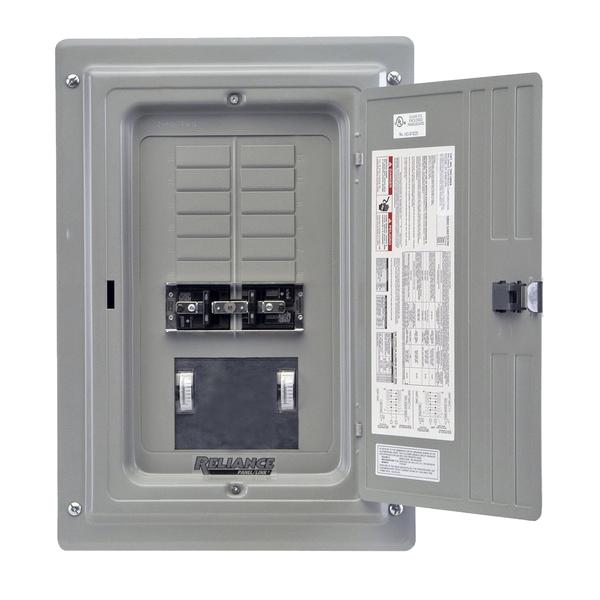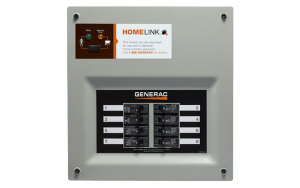Disclosure: This post may contain affiliate links. This means that at no cost to you, we may earn a small commission for qualifying purchases.
Last Updated on April 7, 2024
If you’re familiar with many Hollywood movies, you’ll be all too familiar with a scene with the power goes out and then the cast sits around waiting for the backup power to turn on. Have you ever wondered how exactly those systems work?
That action is controlled through what is referred to as a transfer switch. These devices are installed into an electrical system and function to bring power from one source when the other fails. Many people choose to install transfer switches connected to their generators so they can turn on the generator power to power anything. It is always important to choose the best transfer switch and at the same time it is important to use a generator transfer switch.
Looking to get a transfer switch? See transfer switches that most people are buying.
Contents
Why Is A Generator Transfer Switch Necessary?

Some people wait until the absolute last moment to get their generator, whether it be just before a major renovation or a big storm that’s expected to make the power go out. Without generator transfer switches generators are difficult and often dangerous to use, so it is important to install a transfer switch.
What most people fail to realize is that there’s a lot that goes into wiring up a proper electrical system before consumers can enjoy the simple plugin & play convenience of the average electrical outlet. If you plan on using a portable generator to temporarily power some appliances in your home, a transfer switch is absolutely necessary.
Howerver it is not possible to power all your devices at home by just installing a transfer switch, it depends on the electrical capacity of your portable generator and transfer switch.
Besides being required by most jurisdictions’ electrical codes, using a generator without a transfer switch puts you at risk of permanently damaging your appliances or the generator itself. Using extension cords is not recommended for this very reason.
Essentially, without a transfer switch, you’re at risk doing more harm than good and maybe even hurting yourself in the process.
How Does A Transfer Switch Work?
It’s an attractive option to be able to power your house in the event of a power outage or similarly bad occurrence, so many people elect to have a generator on hand, so they are in control of all their power needs should disaster strike.
But, your appliances and home can either be powered by the grid or by the generator at a single time, not both. This means that the two systems need to be distinct from each other as far as wiring is concerned, and the transfer switch is the junction that segregates the two systems.
A power switch works to switch the power source from the utility lines to the generator. This prevents back-feed into the electrical lines and vice versa.
The transfer switches are installed into the circuit breaker of a home by a licensed electrician who is instructed to which circuits the transfer switches needs to be hooked up to. Most of the time people choose to only have their generator hooked up to the absolutely essential circuit breakers so their fridges, freezers, and other important appliances that will help them get through a power outage still work.
Not only that, a generator is limited by its wattage as far as just how many things it can power, so the transfer switch needs to be hooked up to only enough circuits as it can adequately provide power for.
Picking The Right Transfer Switch For Generator

So, while not necessary in the raw sense of the world, safely hooking up your generator to your home is entirely necessary. Not all generators are made the same, so in the same vein, not all transfer switches are the same either. During an outage, you will need to turn on the portable generator, plug it into the power inlet box.
Here are some things that need to be considered when picking up a transfer switch of your own, transfer there are two types of transfer switches:
Manual transfer switches Or Automatic transfer switches
Depending on your personal preferences, you’ll first have to decide whether or not your transfer switch is a manual transfer switch or automatic transfer switch.
A manual transfer switch means you’ll have to start your generator yourself as well as flip the switch which gives you full autonomy over the process and reduces the chances that anything will go wrong without you realizing it. Stationary backup generators are installed with an automatic transfer switch, but portable generators require a separate manual transfer switch
Some portable generators that have an electric start will need a automatic transfer switch that will immediately turn the generator on in the event of a power outage. This will give you the opportunity to finish up whatever you were doing and plan your next moves without having to worry about touching the portable generator at all.
Wattage
How much of your home you’ll be able to power from generator, that will be entirely dependent on what the wattage rating is on your portable generator or standby generator, as well as how many watts the transfer switch itself will be able to allow running through it.
For reference’s sake, a 5,000 running watts portable generator can power on average about six different circuits. However, you’ll have to decide yourself which circuits you’ll want, and you should add up the wattage on each circuit to see if it exceeds what your generator is able to supply. To do this, check all appliances hooked up to a particular circuit and then add their wattages together. If the total watts is under what your generator can provide, then you’ll be doing just fine.
Amperage
Another consideration when it comes to transfer switches is that the generator needs to be able to actually hook up to the switch and transfer the power safely. This means the user needs to take a look at their power cord and then from there look for the amp and NEMA plug type.
With this information, you’ll be able to then figure out what kind of plug you’ll need for the transfer switch to work properly. For example, if the transfer switch can handle a maximum of 50 amps, its size will be listed as 50 amp.
In short, a generator transfer switch is a gatekeeper between power from your generator and the electrical system found inside a home. Having one installed isn’t a do-it-yourself procedure and will require some electrical know-how to make sure that everything works properly.
Failing to use a transfer switch risks damaging the electrical system of a home and as well as the portable generator itself, not to mention adds a huge risk for electrocution for anyone who ends up working on any part of the system.
For instance, if a transfer switch isn’t used and some power gets back-fed into the grid, people working on the power lines might end up getting electrocuted.
Simply put, transfer switches make powering something with a generator feasible.
Related Article :



Leave a Reply
You must be logged in to post a comment.